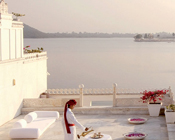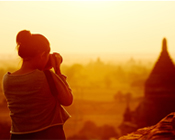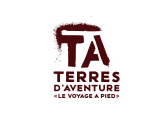Population & Culture
The question "Who are the Turks?" does not have an easy answer. At the turn of the 20th century the Ottoman Empire was a multinational state extending over three continents. This page limits its discussion to the borders of the Republic of Turkey (founded in 1923). The location of the pictures are given with the name of the city or as a region, in case the source does not mention it.
Turkish culture has undergone profound changes over the last century. Today, Turkey may be the only country that contains every extreme of Eastern and Western culture (along with many compromises and fusions between the two). The Ottoman system was a multi-ethnic state that enabled people within it not to mix with each other and thereby retain separate ethnic and religious identities within the empire (albeit with a dominant Turkish and Southern European ruling class). Upon the fall of the empire after World War I the Turkish Republic adapted a unitary approach, which forced all the different cultures within its borders to mix with each other with the aim of producing "Turkish" national and cultural identity. This mixing, instead of producing cultural homogenization, instead resulted in many shades of grey as the traditional Muslim cultures of Anatolia collided with (or had imposed upon them) the cosmopolitan modernity of Istanbul and the wider West. Thus, Turkish culture in many ways represents a continuum that bridges past a.

 1 (866) 722-0909
1 (866) 722-0909
 QUOTE REQUEST
QUOTE REQUEST 





































